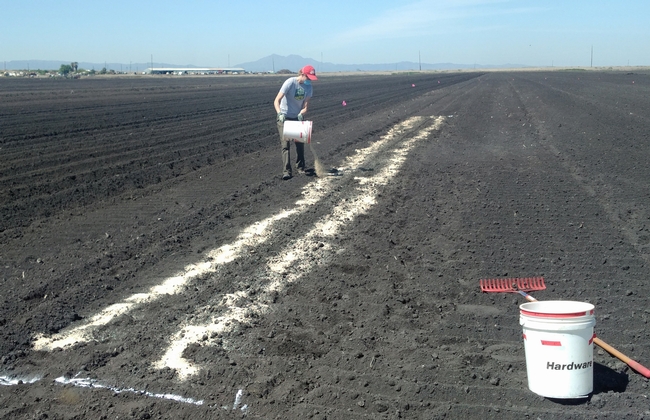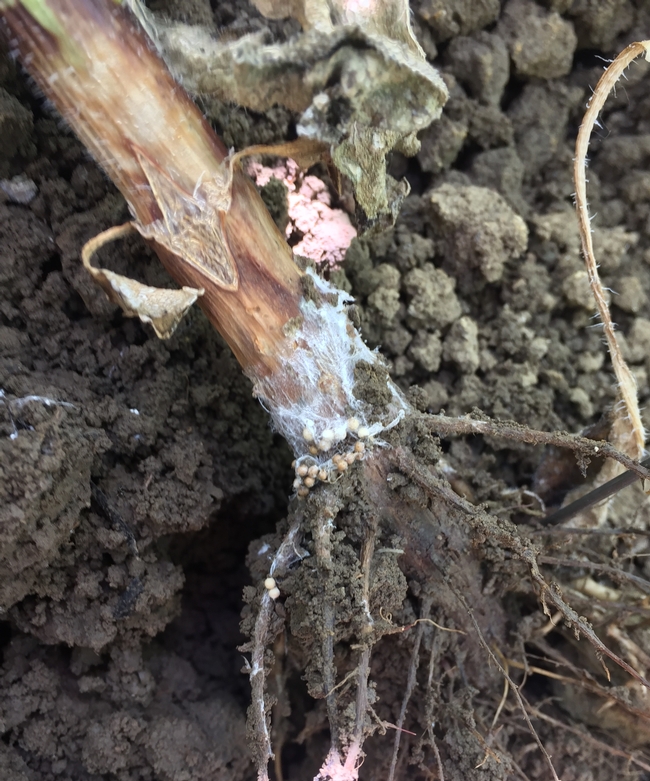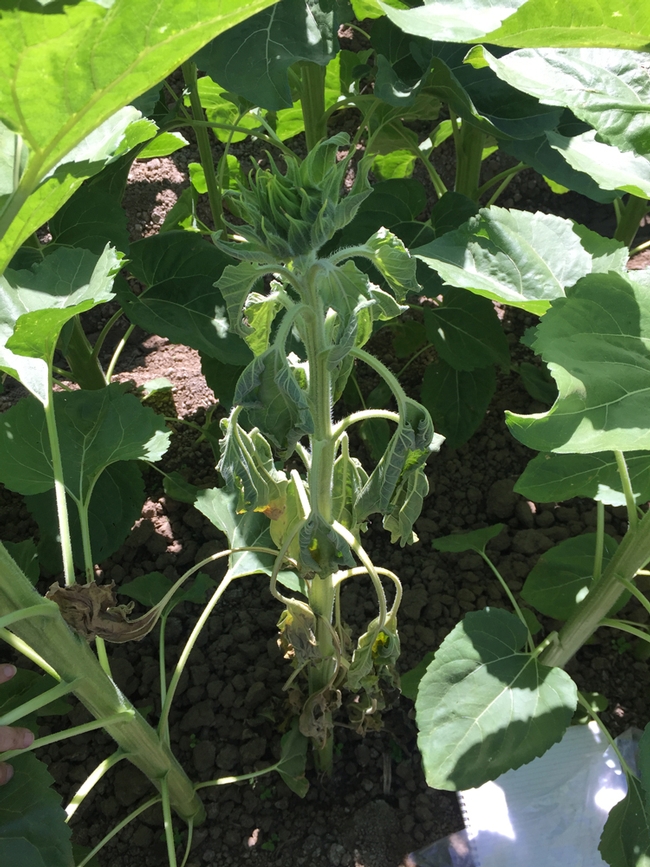Southern blight, caused by the fungus Sclerotium rolfsii, is a soilborne pathogen that is increasingly becoming problematic in many crops - including tomato, potato, sunflower, bean, and pepper - likely due to higher spring and summer temperatures. Initial symptoms of southern blight include a yellowing of the foliage with slight darkening of the stem just above the soil line. Lesions on the stem at or near the soil line develop rapidly, girdling the stem and causing sudden and permanent wilt of the plant. The fungus grows downward on the stem, rotting the cortical tissue. White mats of mycelium develop on the stem and nearby soil. In a few days, tan to brown spherical sclerotia (tiny compact masses of hardened, fungal mycelium) may appear on the mycelial mat. The sclerotia are a good diagnostic feature of this disease in many crops, but are rare in some, like tomato.
Infections by S. rolfsii are triggered by warm temperatures and moist soil conditions. The inconsistent development of southern blight from year to year makes it hard to determine when or if fungicides might be needed in a given year. To address this problem, we are developing a risk forecasting tool which can alert growers to southern blight risk events in the growing season, to inform when fungicide applications are required to control the disease. This summer, we are collecting data on soil temperature, soil moisture, and disease incidence in annual cropping systems throughout the Central Valley to develop a predictive model, which we are validating in controlled trials in collaboration with UCCE advisors Brenna Aegerter and Jaspreet Sidhu. While fungicides can effectively control southern blight, dense canopies and a lack of crop registrations limit their usefulness; moreover, there are limited fungicide options available to organic producers, who are often the most impacted by this disease.
A second goal of our project is to provide an integrated management toolkit for southern blight, which includes organic options. This involves generating information on better or worse crop rotations in southern blight infested fields, continuing work we started with UCCE advisors Amber Vinchesi-Vahl and Sarah Light in 2018. We are examining changes in fungal densities in soil following planting to various crops over three years (2018, 2020, 2021). We're also exploring pathogen-suppression using: 1) chitin amendment to stimulate microbes that break down chitin, and in turn the chitin-based survival structure of S. rolfsii, and 2) soil solarization in the fall to kill the pathogen in the soil.
The deliverables from this project will include a disease forecasting tool, information on crops that are severely affected by the disease and increase southern blight loads in fields (to avoid) and crops that are less affected and do not increase southern blight loads (to rotate with more susceptible crops), as well as soil treatment strategies for infested fields.
This project is supported by the USDA NIFA Postdoctoral Fellowship and the California Potato Board. Collaborators include Brenna Aegerter, Rachael Long, Mrinalini Narayan, Neil McRoberts, Kelley Paugh, Jaspreet Sidhu, Amber Vinchesi-Vahl, UCCE Colusa County, and the UC Davis Department of Plant Pathology. For more information, contact Cassandra Swett at clswett@ucdavis.edu.


